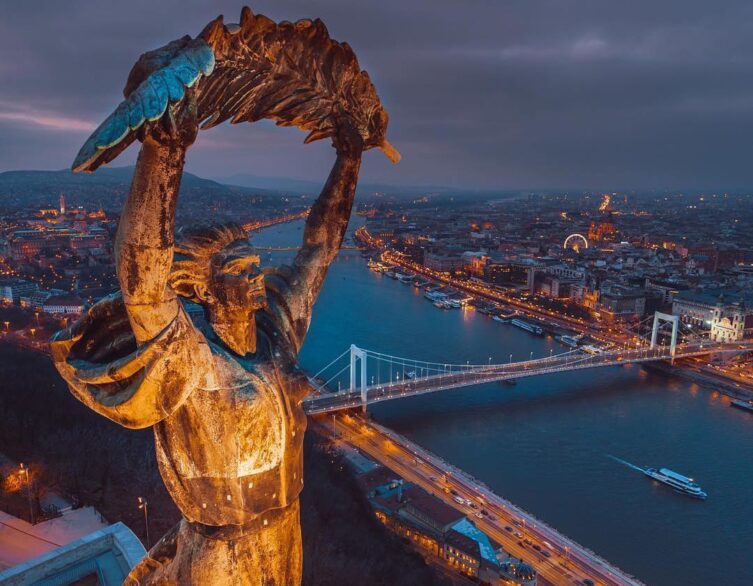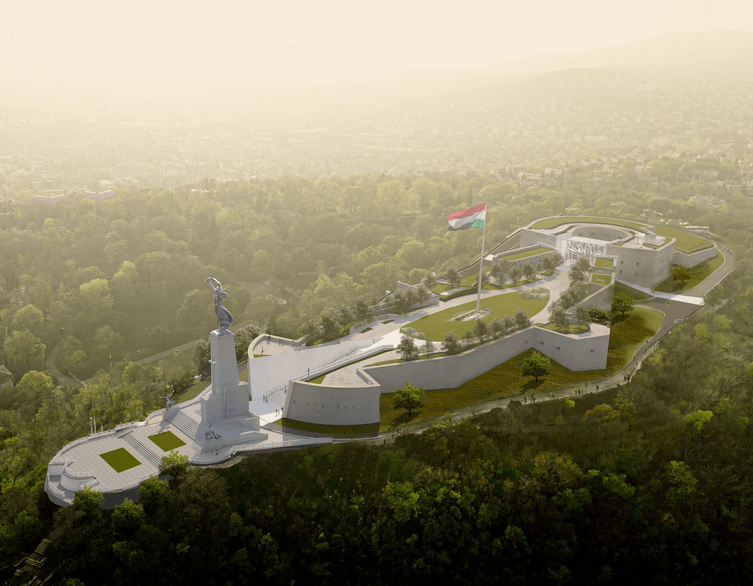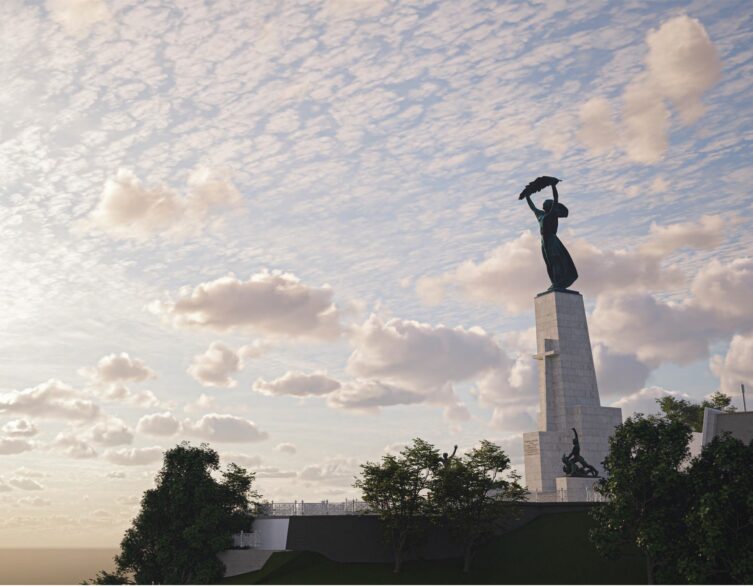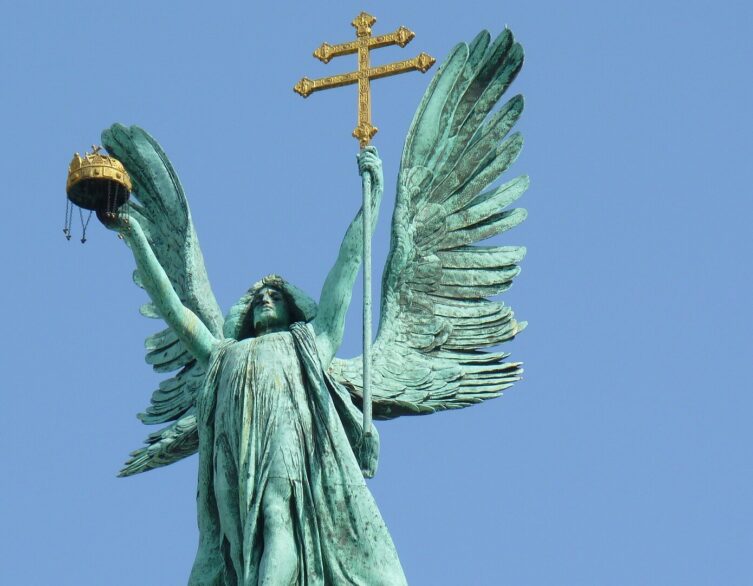The Tragic History Behind Budapest’s Iconic Statue of Liberty

As you explore the enchanting city of Budapest, you might come across a peculiar sight: the iconic Statue of Liberty, affectionately known by locals as the “Great Beer Opener,” encased in scaffolding. While this ongoing restoration is part of the larger reconstruction process of the Citadella, there is a tragic history lurking behind the temporary veil that obscures the face of the woman who symbolizes freedom.
The Story of “Liberation”
The Statue of Liberty, perched atop Gellért Hill, has long been a symbol of Budapest. The 14-meter-tall statue, reaching a total height of 40 meters with its pedestal, towers above the 235-meter peak of the hill. Designed by Zsigmond Kisfaludi Strobl in 1947, the statue depicts a woman holding a palm leaf, a symbol of victory and peace, in her raised hand. Visible from numerous vantage points throughout the city, the monument has become an integral part of Budapest’s skyline.
However, the statue’s history is intertwined with Hungary’s tumultuous past. Originally named the “Liberation Monument,” it was erected to commemorate the Soviet Army’s victory over the German forces in Budapest during World War II. Following the collapse of the socialist regime and the reevaluation of the Soviet “liberation,” the monument underwent significant alterations. The 4-meter-tall statue of a Soviet soldier wielding a machine gun, which once stood at the foot of the monument, was removed, and the inscription on the pedestal was changed to reflect a new interpretation of this Budapest landmark.
Best deals of Budapest
Despite the statue’s rebranding as a symbol of freedom, the pain and suffering endured by the Hungarian people during the Soviet occupation cannot be erased. The Citadella itself, once a symbol of oppression, is now being transformed into an accessible public space. The walls of the fortress are being opened up with new entry points, allowing visitors to approach the monument from three different directions. A 6,000-square-meter public park, complete with observation decks, walking paths, and a café, is being created within the Citadella’s inner courtyard.
The Tragic Life of The Model
The Statue of Liberty holds another tragedy carved into the very stone. Few know the heartbreaking tale of the woman who modeled for this magnificent sculpture. Her name was Erzsébet Gaál, and her life was forever changed by a chance encounter with the renowned Hungarian sculptor Zsigmond Kisfaludi Strobl.
In 1945, as Budapest began to rebuild following the devastation of World War II, Kisfaludi Strobl was commissioned to create a monument commemorating the Soviet liberation of the city. He envisioned a towering female figure holding a palm frond, symbolizing peace and victory. While waiting for a tram, the sculptor spotted Erzsébet, a young nurse with a noble posture and pure gaze – the perfect embodiment of the Hungarian people’s strength and resilience.
Erzsébet agreed to model for the statue, not realizing the profound impact it would have on her life. For ten days, she posed for hours, holding a real palm frond while a large fan blew air at her. Despite the grueling sessions, she received no compensation from the state, only small gestures of kindness from the sympathetic artist.
As the 14-meter-tall statue was unveiled in 1947, Erzsébet’s life began to unravel. She became a target of public scrutiny and harassment, with some even throwing stones at her during the 1956 Hungarian Revolution. The government initially used her as a propaganda tool, arranging meetings with Soviet dignitaries, but eventually, she was forgotten and left to struggle in poverty.
Erzsébet spent her final years working as an X-ray assistant at the Sopron State Sanatorium, living in a converted attic room. Despite her pleas for help, the government largely ignored her plight. She passed away on May 6, 1989, at the age of 72, just months before the fall of communism in Hungary.
As you witness the Statue of Liberty enveloped in scaffolding, remember the tragic history that lies beneath the surface. The ongoing restoration serves as a reminder of the resilience and strength of the Hungarian people, who have persevered through decades of hardship. When the renovation is complete, visitors will be able to appreciate the statue’s beauty and significance with a newfound understanding of the sacrifices made by those who fought for freedom.
So, as you affectionately refer to the Statue of Liberty as the “Great Beer Opener,” take a moment to reflect on the profound history that has shaped this iconic landmark and the city of Budapest itself.
Image source: https://www.facebook.com/BudapestHungaryBlog
Related news
Related events






















